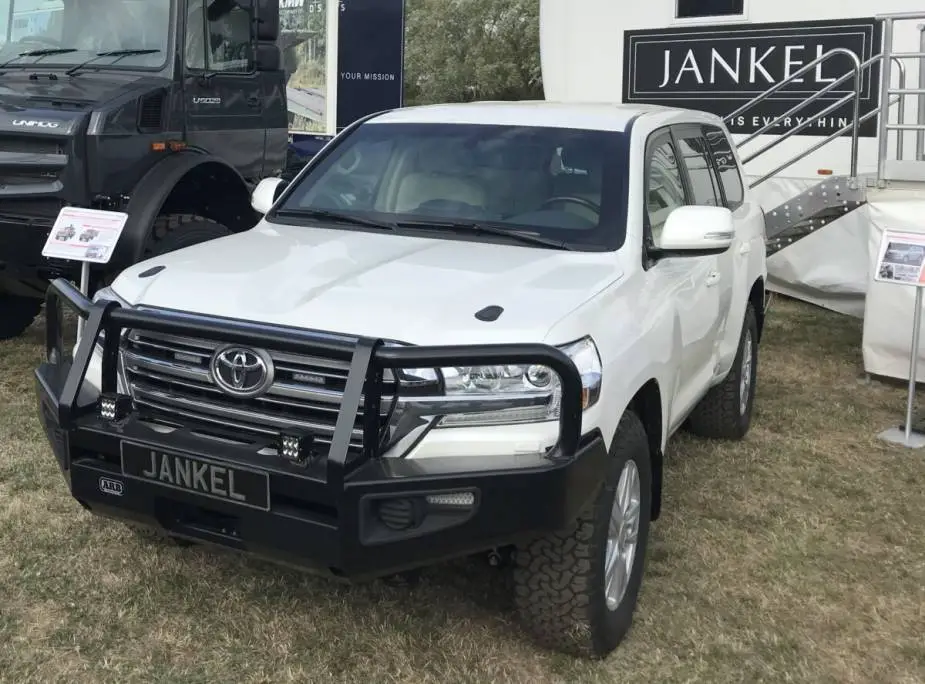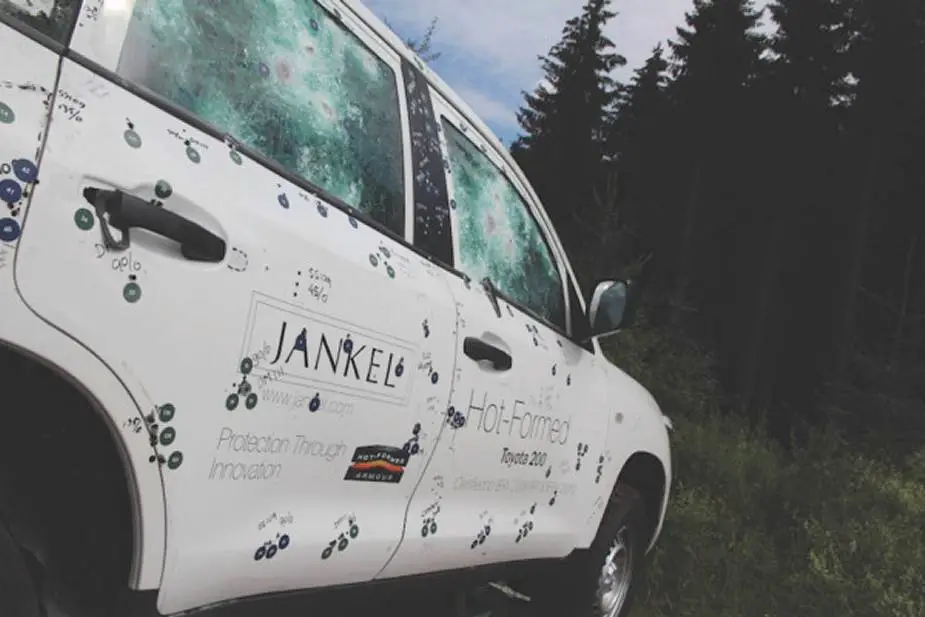Breaking news
Jankel engineering the future of civilian armoured vehicles.
Jankel has a long history and outstanding reputation in providing innovative protection and mobility solutions for defence, governments and NGOs operating in high threat environments. Combining expertise from defence and mainstream automotive industries, Jankel has developed a team with vast knowledge in this complex and evolving sector, alongside strong partnerships with the Original Equipment Manufacturers (OEMs), to provide class-leading solutions.
Follow Army Recognition on Google News at this link

Toyota LC200 armored by Jankel (Picture source: Jankel)
The world of civilian armoured vehicles (CAV) is constantly changing with evolving threats, environments and not least technologies. These changes require suppliers to excel not only in the design and development of physical protection but also complex systems integration to ensure product and mission success.
There are multiple challenges currently facing the future of civilian armoured vehicles, not least of which the discontinuation of the most popular base platform (Toyota LC200), but also changes in vehicle construction, automotive technology advances, increased blast and ballistic capabilities and emerging cyber threats. Jankel has led the way in the industry for over 60 years and continues to do so in addressing these challenges of the future.
Long gone are the days when a CAV was about adding some bulletproof glass and welding together ballistic protection panels. Not only are modern CAVs produced by Jankel equipped with the latest in modern materials technology (such as hot-formed and composite armour), but every platform goes through an extensive process of detailed design, testing, upgrading of key components to cope with the additional stresses, integration of mechanical and electrical systems, virtual and physical testing to achieve ballistic protection rating and full vehicle safety certification. These modern CAVs are fully integrated, high capability platforms; not just a conversion. It is for this reason that designing and developing a new CAV platform (such as the Toyota LC300 that is soon to replace the LC200) takes meticulous planning and a team of highly skilled engineers to complete.
Most of the changes and developments in the mainstream automotive industry are moving in the opposite direction to that which is generally required for the base platform of a CAV. Driven by environmental pressures, through the use of lightweight materials and smart technology, the automotive industry is focused on increasing efficiency, decreasing emissions (hybrid electric) and providing ever more features to the consumer. These features are in stark contrast to the traditional needs of armored platforms which rely on their weight carrying capacity, reliability in hostile environments and discretion/security features. Therefore, modern CAV manufactures must remain vigilant to:
• the ever-changing blast and ballistic threat, requiring higher protection levels to mitigate the risk, whilst employing innovative solutions to minimize additional platform weight. Traditional armouring techniques alone are no longer sufficient to meet all of today’s CAV technical needs.
• the complex electrical, inter-connected and smart nature of vehicle systems requiring detailed OE level understanding to enable the integration of bespoke tactical systems being fitted to the CAV that are interoperable with these OE systems. A focus is on removing the risk of base vehicle system errors potentially leading to vehicle shut down as well as interference with tactical systems.
• OEM vehicle and system-level smart technology leading to emerging cyber threats to interception of data transmission, remote vehicle system control and overall security of the platforms. Providing cyber protection is an evolving but important part of CAV protection that the OEM, customers and integrators alike are having to deal with.
To meet these current and future challenges, Jankel continues to lead the way in applying a systems approach to platform development that leverages the very latest expertise, technologies and thinking to provide a product that is fit for purpose given new and diverse threats.
Jankel continues to develop its close working relationships not only with customers, to understand the requirement, but also with the OEMs to ensure the best possible CAVs can be provided in the future. This has certainly been the case to ensure the new LC300 is delivered as soon as possible and remains a world-class CAV designed and protected by Jankel.
Jankel’s programme to design and develop a new LC300 based CAV is firmly in place and will be the subject of further announcements in the coming months leading towards a new product launch once ready.

Not only are modern CAVs produced by Jankel equipped with the latest in modern materials technology (such as hot-formed and composite armour), but every platform goes through an extensive process of detailed design, testing, upgrading of key components to cope with the additional stresses, integration of mechanical and electrical systems, virtual and physical testing to achieve ballistic protection rating and full vehicle safety certification. (Picture source: Jankel)


























